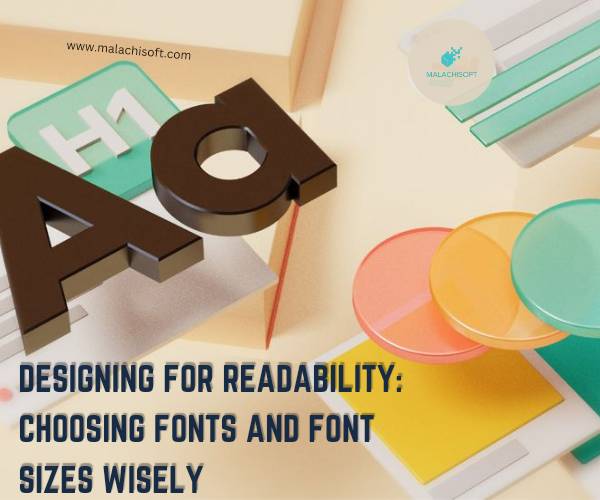In the realm of web design, readability stands as a paramount factor influencing user experience. It’s not just about having compelling content; it’s equally vital to present it in a format that’s easy on the eyes. The choice of fonts and their sizes plays a pivotal role in determining the readability of your website. Let’s delve into the art of selecting fonts and font sizes wisely to enhance readability:
The Importance of Readability in Web Design
Before diving into font selection, it’s crucial to understand the significance of readability. A website’s content can captivate visitors only if it’s effortlessly readable. Poor readability, often stemming from inappropriate font choices or sizes, can discourage users from engaging with your content and adversely affect user experience.
Choosing the Right Fonts
1. Prioritize Legibility Over Elaboration:
Opt for fonts that are easy to read, even at smaller sizes. While decorative fonts might look appealing, they can hinder readability. Sans-serif fonts such as Arial, Helvetica, or Roboto are known for their clarity, making them suitable for body text.
2. Maintain Consistency:
Maintaining a consistent font style throughout your website fosters familiarity and enhances readability. Use a combination of font weights (e.g., regular, bold, italic) for emphasis, but refrain from mixing too many font families.
3. Consider Brand Identity:
While readability is crucial, aligning your font choice with your brand’s personality is also essential. Choose fonts that reflect your brand’s identity and tone while ensuring readability remains a priority.
Determining Appropriate Font Sizes
1. Aim for Readable Body Text:
For body text, a font size of 16 pixels (or equivalent em/rem units) is widely recommended for optimal readability across various devices and screen sizes. Adjustments can be made based on font style and user preferences.
2. Differentiate Headers and Subheadings:
Use varying font sizes to distinguish headers, subheadings, and body text. Headers should be larger and bolder than the body text, creating a clear hierarchy that aids readers in navigating through the content.
3. Responsive Font Sizing:
Utilize responsive font sizing techniques (such as using relative units like em, rem, or viewport units) to ensure adaptability across different devices, maintaining readability without sacrificing design integrity.
Testing and Iterating
After implementing font choices and sizes, it’s crucial to test their effectiveness. Conduct usability tests and gather feedback from users to assess readability. Monitor metrics like time spent on pages and bounce rates to gauge user engagement.
Conclusion
In the intricate world of web design, readability reigns supreme. The art of choosing fonts and font sizes wisely significantly impacts how users engage with your content. By prioritizing legibility, maintaining consistency, and aligning fonts with your brand identity, you can elevate readability, enhance user experience, and leave a lasting impression on your audience.
Remember, the key lies in finding the perfect balance between aesthetic appeal and readability to create an immersive and enjoyable browsing experience for your users.
Strive to make every word on your website a pleasure to read, ensuring your audience remains captivated and engaged from start to finish.
